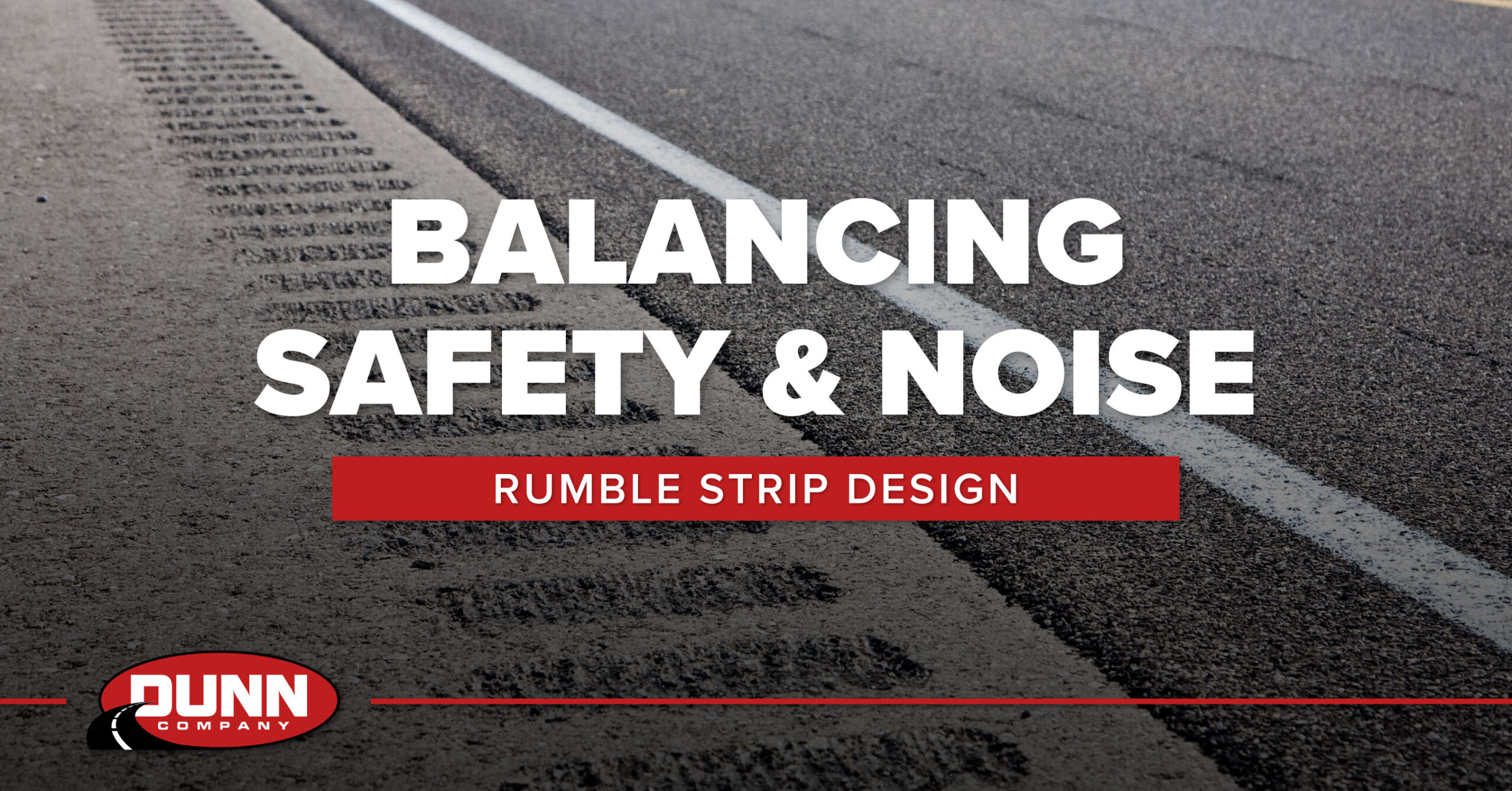Rumble Strip Design: Balancing Safety and Noise
Rumble strips are a proven and cost-effective safety measure, widely recognized for their ability to prevent roadway departure crashes, including both run-off-road and opposing-direction incidents. These devices provide audible and tactile feedback, alerting drivers when they are unintentionally drifting from their lane or leaving the roadway. However, while rumble strips have long been an essential countermeasure to improve road safety, the external noise they generate has become a significant concern, especially for nearby residents.
With the growing use of rumble strips, transportation agencies have increasingly sought ways to balance their safety benefits with the desire to mitigate noise disruption. In response to this, new designs and research initiatives have emerged that aim to reduce the external noise levels associated with rumble strips while preserving their crash-reduction effectiveness. This article delves into the latest research from the University of Illinois and the Federal Highway Administration (FHWA), along with best practices for implementing rumble strips in a way that minimizes noise while maximizing safety.
Proven Effectiveness for Roadway Safety
The primary function of rumble strips is to alert drivers to unsafe driving behaviors by creating both audible and physical feedback. There are two main types of rumble strips commonly used in roadway safety:
- Centerline rumble strips: Positioned along the centerline of the road, these rumble strips are designed to prevent head-on collisions and opposite-direction sideswipes. They are typically installed on two-lane rural roads, although they can be effective on multilane undivided highways as well. The FHWA reports that centerline rumble strips have reduced head-on and opposite-direction crashes by as much as 45% on rural roads.
- Edge line rumble strips: These are installed along the edge of the roadway to prevent run-off-road crashes, which occur when drivers unintentionally drift off the shoulder. Edge line rumble strips are particularly beneficial for highways and two-lane roads, helping reduce single-vehicle, run-off-road fatalities by 36%.
While these strips effectively reduce crashes, their external noise has raised concerns among residents near high-traffic areas. The challenge, therefore, is to find a balance—ensuring that rumble strips remain effective while minimizing the disruptive external noise that can impact surrounding communities.
Noise Concerns and Research Insights
Noise is a natural byproduct of rumble strips, particularly when vehicles pass over them. The intensity of this noise is a combination of several factors, including the depth of the rumble strip, the frequency of the noise produced, and the proximity of the rumble strip to noise-sensitive areas.
As part of ongoing research, the University of Illinois conducted a comprehensive study on the external noise generated by rumble strips and found significant variations based on design modifications. The study revealed that while traditional rumble strips effectively alert drivers, the external noise they produce can significantly exceed acceptable levels, especially when the rumble strip depth is increased.
In addition to this, the FHWA has long recognized the noise concerns associated with rumble strips, and their “Rumble Strip Implementation Guide” emphasizes the importance of balancing safety with community impact. The guide details several approaches to addressing noise issues, including:
- Placement Considerations: Placing rumble strips further from residential areas or using modifications in design to minimize the frequency of tire contact with the rumble strips.
- Design Adjustments: The FHWA recommends experimentation with varying rumble strip depths and designs to reduce the noise without compromising the safety effectiveness of the strips. These considerations are particularly important for areas where the environmental impact of noise is significant.
Addressing Noise Without Sacrificing Safety
Recent advancements in rumble strip technology are focused on reducing the external noise levels while maintaining or even enhancing the safety benefits of these vital safety features. Several innovative designs are showing promise:
Sinusoidal Rumble Strips
The sinusoidal design, which features a wave-like pattern, has been found to significantly reduce the external noise produced by traditional rectangular rumble strips. According to a study conducted by the California Department of Transportation (Caltrans), external noise from sinusoidal rumble strips is 3 to 7 decibels quieter compared to conventional designs. This quieter design provides a viable solution for reducing noise while still maintaining sufficient in-vehicle noise to alert drivers effectively.
Shallower Depths and Wider Spacing
Other modifications to rumble strip design focus on altering the depth of the cuts and the spacing between the strips. Shallower rumble strips, which are typically in the range of 0.25 to 0.5 inches, have been shown to generate less noise. Additionally, increasing the spacing between each rumble strip can reduce the frequency of noise occurrence without significantly diminishing the safety function of the strips.
Strategic Placement of Rumble Strips
Placement of rumble strips remains a critical factor in addressing noise concerns. Agencies have begun evaluating the placement of rumble strips based on local conditions, including the proximity to residential areas. For example, some agencies are now omitting rumble strips in areas with high resident densities or near sensitive areas, such as schools and hospitals. Other strategies include placing rumble strips further away from the road’s edge to reduce tire contact and minimize noise.
Balancing Noise and Safety
At Dunn Company, we are committed to implementing the most effective and environmentally considerate rumble strip designs available. As experts in roadway construction and safety, we stay at the forefront of rumble strip technology, using the latest research to inform our practices.
We work closely with engineers, public works departments, and safety professionals to design and install rumble strips that maximize safety benefits while minimizing external noise. Whether you’re looking to implement centerline or edge line rumble strips, our team has the experience and knowledge to recommend the best solution for your project.
As rumble strip designs continue to evolve, it’s clear that innovative approaches, such as sinusoidal rumble strips and optimized placement techniques, will help us achieve the delicate balance between safety and noise reduction.
For more information on how Dunn Company can assist with your rumble strip projects, or if you’d like to discuss the latest research and design trends, don’t hesitate to contact our team. We are here to help ensure that your roadway safety measures are as effective and considerate as possible.


